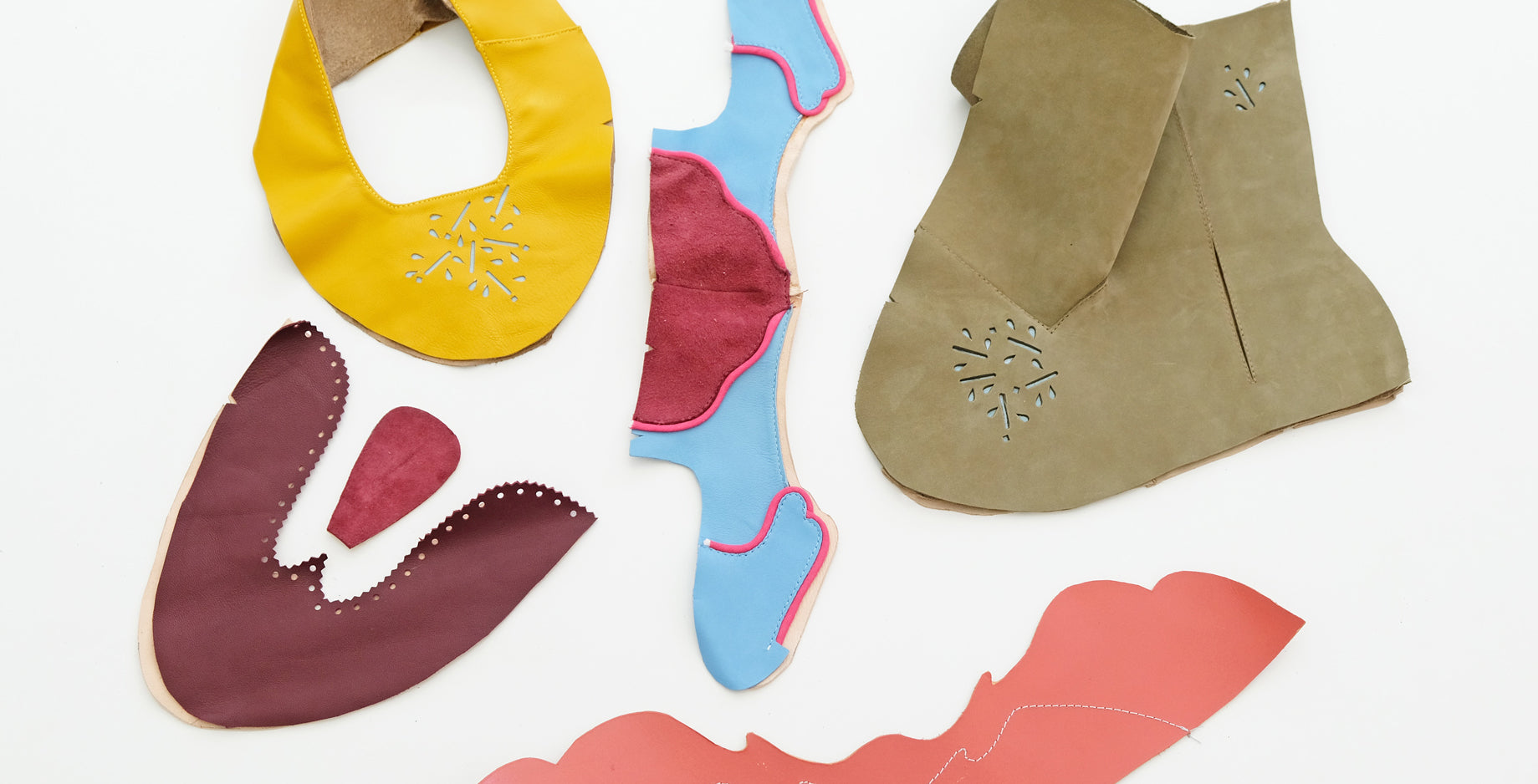If you're struggling to figure out which leather to use for your home shoe or bootmaking project, here is a bit more info to help you with your decision :)
I'm always talking about choosing the right thickness but it's really more about stretchiness. The reason I talk about the thickness is because if you go too thick it may become a problem for your domestic sewing machine so with this in mind try to stay between 1.5 - 3mm as a rough guide, but like I said don't get too stuck on this, it's really the stretch that matters the most.

When it comes to making sandals, you'll want leather with almost zero stretch - like a 2mm thick veg tanned leather.
When it comes to making shoes, you'll want a leather with a bit more of a stretch so you can easily last them over the tow of the last.
Boots want a sturdier leather so you have a bit more structure to the boot, especially on the parts that go beyond the last, for example up the leg.
I have a whole selection of different thicknesses, weights & stretchiness here but they are all suitable to use. Keep in mind you could use the same piece to make a shoe and a boot but they might just give a totally different look. For Example, a soft lambskin high heel will hold its shape nicely because it is formed using the last. However if you use the same piece to make a boot, you'd get a slouchy look around the ankle :)

THICK Vs THIN LEATHER
PRO: Thicker will hide mistakes, thinner will be easier to work with.
CON: Thicker will be harder to work with, thinner will show up more imperfections.
When buying leather, it's always best if you can do it in person, try to avoid leathers that have zero stretch or feel "crunchy". Stretch the edge of the leather so that you can make sure it's malleable and to check that the colour won't crack when you stretch it.
Leather is priced per sqft, and you'll need to buy the whole piece so try to find a skin that isn't too big.
Always Always Always check for imperfections!
When it comes to lining, try to balance out the weights of the leathers you have chosen. For example, if you are using a thin upper you can balance it out by using a thicker lining. I almost always use a lambskin lining because it's lovely and soft, but you can really use whatever you like :)
Hope this helps!
learn shoemaking for yourself
I created a free 40-minute online course called 'Introduction to Shoemaking' to show how easy home shoemaking can be and to give you a little taste of what I Can Make Shoes is all about.
SIGN UP HERE for instant access.
If you are wanting to dive a little deeper into the world of home shoemaking, my online Footwear Masterclass is one of the most popular shoemaking courses in the world!! 🌍 (Casual brag! lol)
The course covers how to make shoes from scratch including heels, flats, boots, sneakers, sandals, and more. The thing that really sets this course apart from others is that it's specifically designed for total beginners and requires very little in the way of tools & equipment, there's even a bonus module on how to start your own shoe brand. To make getting started even easier, the course comes with a FREE Shoemaking Starter Kit, delivered to your door, anywhere in the world! 🌍
We are a tight community and regularly limit our intake to ensure the best experience for our students - so if our enrolment is closed I would recommend you sign up for our FREE Introduction to Shoemaking course while you wait.
Happy Shoemaking, Amanda xx
Pssssssst.... If you want to have a look at the shoes our students have been making, give us a follow on Instagram.






